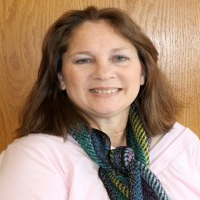This article is the first in the series on Genetic Genealogy becomes mainstream (see earlier posting). The objective of this article is to explain some basic concepts.
Males have both X and Y in their chromosomes (thus XY) while females have two Xs (thus XX). Because the Y-chromosome is handed down from father to sons, it can be used in tracing the exclusively male line of a family. On the other hand, the X-chromosome in women, also called mitrochondrial DNA (mtDNA), is handed down by each mother to all of her children. Hence mtDNA is useful to both males and females for tracing the exclusively female lines of their families and for analysis of deep ancestry.
The human genome contains some 3 billion chemical nucleotide bases. The four nucleotides present in DNA are adenine (A), guanine (G), cytosine (C), and thymine (T). G always pairs with C and A always pairs with T. It is the sequence of these pairs that provides the basis for counting repeating patterns. At the simplest level, DNA testing looks at a small number of locations in the human genome and counts these repeating patterns. For example, a sample DNA string may read CTTCTAGATAGATAGATAGATAGATAGATAGATAGATAGATAGATAGATAGATCCTAG
Notice that starting from the fifth letter you will see that there are 12 repeats of TAGA, before hitting TCCTAG. Short tandem repeats (STR) are the repeating patterns that occur in DNA. Hence since this DNA string shows 12 repeats of TAGA, the allele value (that would be recorded for the specific marker or location where this DNA string came from would be 12. Earlier DNA testing focused on only 12 markers; more details can be obtained from testing more locations e.g. 25, 37 or 43 markers.
A gene is a specific section of the long double-stranded helix of human DNA that provides the instructions for a specific function. Thousands of genes make up a chromosome and 46 of them, arranged in 23 pairs, define the entire human genome. The 23rd chromosome pair is the one that determines gender.
When a cell divides all DNA in that cell it replicates. Occasionally a mutation occurs during the replication process, so that the DNA copy is slightly different from the original. For example, if CTTCAGGGTC...is a segment of DNA and one mutation occurs so that it becomes CTTCAGGGCC...(notice the change in the next to last letter), then this is called a SNP (called "snip") which stands for single nucleotide polymorphism. Mutations occur very infrequently (think in terms of 10-20 generations). They occur on both the Y chromosome and the mtDNA.
SNP or snips are used to create the phylogenetic tree, a graphic display of the evolutionary relationships between groups of people. Each mutation creates another sub branch of the tree. The 2005 updated Y-chromosome phylogenetic tree can be found
In sum, testing for both Y-chromosome and mtDNA one can determine the haplogroups one belongs to and hence determine a specific branch on the the tree of evolutionary relationships between groups of people. Testing for mtDNA provides the variances in mtDNA versus the CRS.
Guido Deboeck has come out with a new book. Check out
Flemish DNA & Ancestry
Content copyright © 2006 by Guido Deboeck. All rights reserved.
This content was written by Guido Deboeck. If you wish to use this content in any manner, you need written permission. Contact Guido Deboeck for details.


